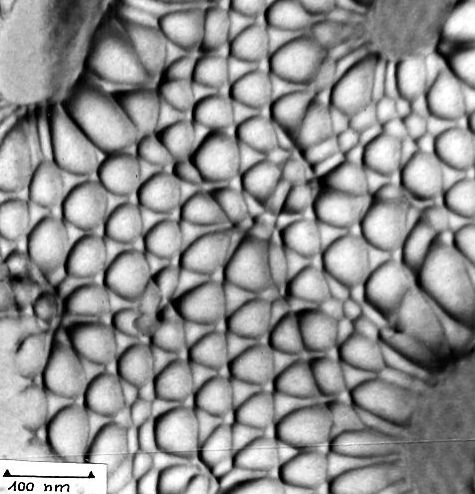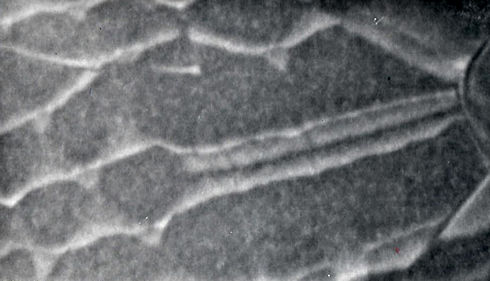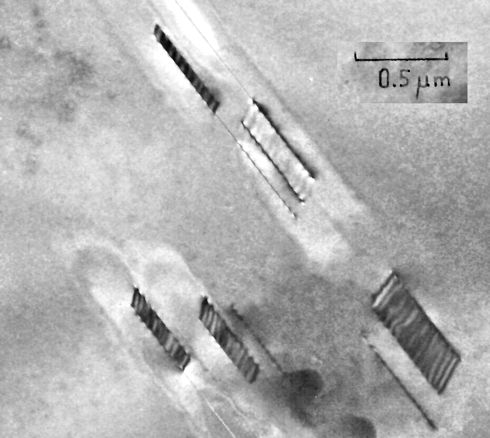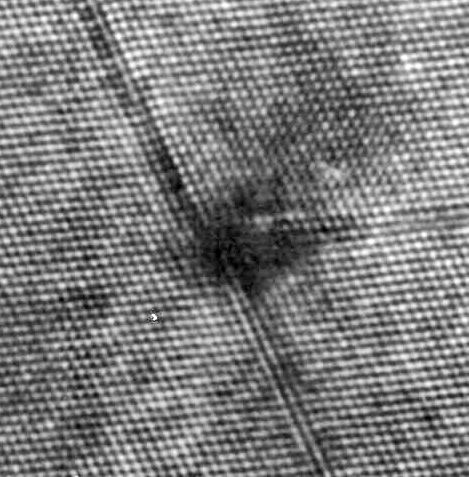| |
My main project during my post-doc time at the Institute of Materials Science
and Engineering at the Cornell University, Ithaca, New York, State, USA. The topic was actually a bit more involved since
t the grain boundaries were "custom made" by sinterinng two pieces of Si together with a pre-determined orientation.
In the simplest case this meant two put two Si wafers with either {100} or {111} orientations on top of each other with
some specific misorientation. Later this was called wafer bonding and made big waves in the Si science and engineering community.
Bonding was tricky, and TEM specimen preparation was extremely tricky. But the pictures I got were rewarding and worth the
effort. The Siemens Elmiskop 102 TEM was in excellent conditions, thanks to the care of Ray Coles, the technician in charge.
It allowed my to employ high resolution TEM (HRTEM) and I produced spectacular images, may a kind of “first”.
The picture shows a small-angle twist boundary on a {111} plane that contains three sets of screw dislocations that
are split into partial dislocations and interact to form a complex network containing intrinsic and extrinsic stacking faults
at the nodes. I also “discovered” a new imaging technique (kinematic multi-beam bright field) that allowed to
see all dislocations at high resolution.
The picture also shows some amorphous stuff in the boundary (probably SiO2
lumps), so-called "double ribbons (see below). |
|



